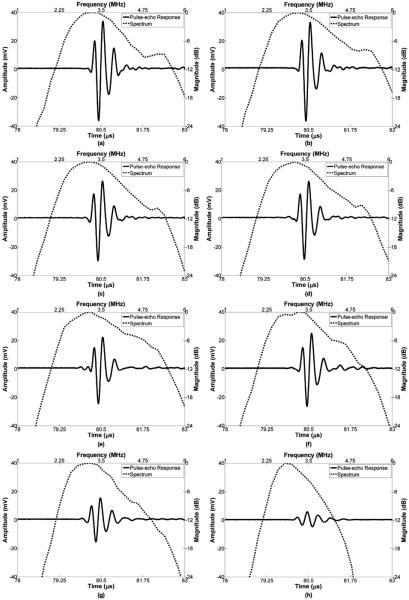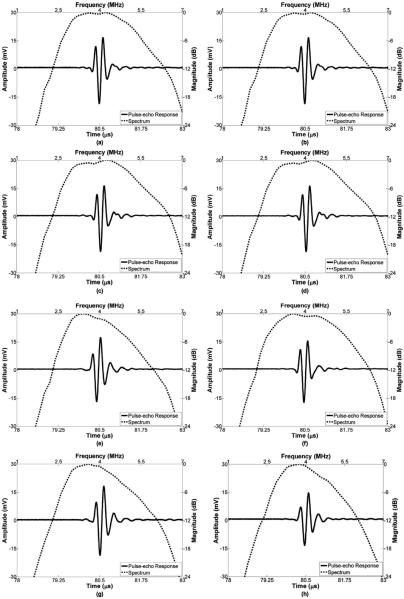Abstract
In this paper, low-frequency 32-element linear-array ultrasonic transducers were designed and fabricated using both ternary Pb(In1/2Nb1/2)–Pb(Mg1/3Nb2/3)–PbTiO3 (PIN-PMN-PT) and binary Pb(Mg1/3Nb2/3)–PbTiO3 (PMN-PT) single crystals. Performance of the array transducers was characterized as a function of temperature ranging from room temperature to 160°C. It was found that the array transducers fabricated using the PIN-PMN-PT single crystal were capable of satisfactory performance at 160°C, having a −6-dB bandwidth of 66% and an insertion loss of 37 dB. The results suggest that the potential of PIN-PMN-PT linear-array ultrasonic transducers for high-temperature ultrasonic transducer applications is promising.
I. Introduction
With high electromechanical coupling factors and excellent piezoelectric coefficients, a binary relaxorbased ferroelectric single crystal Pb(Mg1/3Nb2/3)–PbTiO3 (PMN-PT) near the morphotropic phase boundary (MPB) composition has attracted considerable attention [1], [2]. Various applications have been proposed using PMN-PT single crystals [3]–[6]. However, the binary PMN-PT single crystals have relatively low transition temperatures, including the phase transition from rhombohedral to tetragonal phases (Trt ~ 60°C to 95°C) and the Curie temperature (Tc ~ 130°C to 170°C) [7], [8]. Therefore, the thermal stability of PMN-PT transducers could be a concern at high temperatures. The electrical properties of the single crystal might also be degraded easily in the fabrication of ultrasonic transducers designed for high-temperature applications [9]. Additionally, with their relatively low coercive field (Ec ~ 0.2 kV/mm) [10], PMN-PT single crystals are not suitable for high-power applications. Hence, these drawbacks of PMN-PT single crystals will limit the applications of devices that use this material.
Recently, a ternary single crystal Pb(In1/2Nb1/2)–Pb(Mg1/3Nb2/3)–PbTiO3 (PIN-PMN-PT) was developed to overcome the aforementioned shortcomings. Similar to the PMN-PT single crystal, the PIN-PMN-PT single crystal can also be grown directly from the melt using the Bridgman method [11]. With its MPB composition, the PIN-PMN-PT single crystal was reported to exhibit high electromechanical coupling (k33 > 0.9) and piezoelectric (d33 > 2000 pC/N) performance [12], [13]. Compared with the PMN-PT single crystal, the phase transition temperatures (e.g., Tc > 200°C) and the coercive field (Ec > 0.4 kV/mm) of the PIN-PMN-PT single crystal are significantly increased. With the increase of the phase transition temperature, the piezoelectric performance of these crystals was reported to be retained in a broad temperature range [14]. This enhancement would allow the PIN-PMN-PT single crystals to work in a high-power or high-temperature environment.
With enhanced thermal and electrical stability, the PIN-PMN-PT single crystals have been reported for transducer applications [15]–[17]. However, aside from single-element transducer applications, there is still no report of this material being used in array transducer applications. In fact, compared with the single-element transducers, the array systems are much more desirable because they can be dynamically focused in the image plane at high frame rates using electronic scanning. In this work, low-frequency linear-array transducers were designed and fabricated using both the PIN-PMN-PT and the PMN-PT single crystals. The performance of the transducers as a function of temperature was investigated in detail.
II. Linear Array Design, Fabrication, and Characterization
Fig. 1 displays a schematic diagram of the designed linear array ultrasonic transducer consisting of two matching layers with a light backing strategy for broader bandwidth and higher sensitivity [18].
Fig. 1.

Schematic diagram of the Pb(In1/2Nb1/2)–Pb(Mg1/3Nb2/3)–PbTiO3 (PIN-PMN-PT) linear-array ultrasonic transducer.
A 〈001〉 oriented PIN-PMN-PT single crystal was lapped to a thickness of 0.29 mm, and diced into 8.0 × 15.5 mm rectangular shapes. Top and bottom silver electrodes with a thickness of about 2 μm were coated onto both sides via sputtering. A first matching layer made of epoxy (EPO-TEK 301, Epoxy Technology Inc., Bill-erica, MA) and aluminum oxide particles was cast and cured over the single crystal and then lapped to 158 μm. A 112-μm-thick polyurethane (PU; Youfang Keji, Wuhan, China) layer was bonded onto the first matching layer to serve as a second matching layer. A conductive backing material (2.3 MRayl) mixed with elastic epoxy (9000GA/120B flexible epoxy, WuXi kaimike Electronic Materials Co. Ltd., Wuxi, China) and aluminum oxide particles (13 μm particle size) was cast and cured over the opposite side of the single crystal. The PIN-PMN-PT single crystal sandwiched between the backing and matching layers was diced into 10 elements with a pitch of 0.8 mm. Each element was diced into 4 subelements with a width of 0.15 mm and a kerf of 50 μm. As a result, the aspect ratio (width/thickness) of the subelements was 0.52, avoiding the deleterious effects of mode-coupling [19]. The 50-μm dicing kerfs were then filled with epoxy to reduce the crosstalk between the neighboring elements. An acoustic lens (RTV, GE Silicones, Huntersville, NC) with an impedance of about 1.27 MRayl was attached to the matching layer of the array, giving a focal length of about 6 cm. Finally, the array was placed into a shielded plastic package. After fabrication, the array transducer was poled in air at a room temperature under an electric field of 20 kV/cm for 10 min. In addition, an 8-element PMN-PT single-crystal linear-array ultrasonic transducer of identical dimensions was fabricated for comparison. The parameters and dimensions of the arrays are summarized in Tables I and II.
TABLE I.
Parameters of Pb(In1/2Nb1/2)–Pb(Mg1/3Nb2/3)–PbTiO3 (PIN-PMN-PT) and Pb(Mg1/3Nb2/3)–PbTiO3 (PMN-PT) Linear-Array Ultrasonic Transducers.
| Layer | Material | Thickness (μm) | Acoustic impedance (MRayl) |
|---|---|---|---|
| Single crystal | PIN-PMN-PT/PMN-PT | 291 | 32.60/36.90 [17] |
| 1st matching | Epoxy | 158 | 6.64 |
| 2nd matching | Polyurethane | 112 | 2.26 |
| Backing | Elastic epoxy mixed with aluminum oxide particles | 5000 | 2.30 |
TABLE II.
Dimensions of Pb(In1/2Nb1/2)–Pb(Mg1/3Nb2/3)–PbTiO3 (PIN-PMN-PT) and Pb(Mg1/3Nb2/3)–PbTiO3 (PMN-PT) Linear-Array Ultrasonic Transducers.
| Number of elements | 10 (PIN-PMN-PT)/8 (PMN-PT) |
| Number of subelements of each element | 4 |
| Dicing kerf | 50 μm |
| Subelement pitch | 200 μm |
| Subelement width | 150 μm |
| Total width | 7.95 mm (PIN-PMN-PT)/6.35 mm (PMN-PT) |
For measuring the pulse–echo response and insertion loss, the arrays were mounted on a holder and immersed in a tank filled with the distilled water. The flat quartz reflector was placed 6 cm away from the array surface, which is the focal length of the array. By connecting to an ultrasonic pulser-receiver (Panametrics 5900PR, Olympus NDT Inc., Waltham, MA), the arrays were excited by a 1-μJ electrical impulse with 200 Hz repetition rate and 50 Ω damping factor. The echo signals were acquired and displayed using an LC534 1-GHz digital oscilloscope (LeCroy Corp., Chestnut Ridge, NY). The captured pulse–echo response signals were then used to compute the frequency spectrum using Matlab (R2010b, The MathWorks Inc., Natick, MA). The center frequency (fc) and −6-dB bandwidth (BW) of the array were determined from the measured fast Fourier transform spectrum:
| (1) |
| (2) |
where f1 and f2 represent the lower and upper −6-dB frequencies, respectively. The two-way insertion loss (IL), or the relative pulse–echo sensitivity, is the ratio of the array output voltage Vo to the excitation voltage Vi delivered to the array from a driving source:
| (3) |
The arrays were connected to a function generator (AFG2020, Tektronix, Inc., Beaverton, OR) which was used to generate a tone burst of a 30-cycle sine wave at fc. The echo signal received by the array, Vo, was measured by the oscilloscope with 1-MΩ coupling. The amplitude of the driving signal Vi was then measured with 50-Ω coupling.
To investigate the temperature effect on the array performance, the arrays were heated in a temperature controlled oven (Isotemp Premium Lab Oven, Fisher Scientific, Waltham, MA) at different temperatures before pulse–echo measurement.
III. Results
The echo waveforms and frequency spectra of the PMN-PT single-crystal linear-array ultrasonic transducer measured at different temperatures are shown in Fig. 2(a)–2(h). Table III summarizes the PMN-PT single-crystal array transducer performance, including the center frequency, bandwidth, and insertion loss at different temperatures. The center frequency of the array transducer is about 3.4 MHz. At room temperature, the echo response is strong with short ring-down. The array transducer is shown to have superior properties with broad bandwidth and high output voltage. With increasing temperature, the variation of the bandwidth is small up to 120°C, but the amplitude of the echo decreases gradually. By increasing the temperature up to 160°C, the amplitude of the transducer drops significantly because of the degraded properties of the PMN-PT single crystal near the Curie temperature. Because the piezoelectric element cannot work beyond its Curie temperature, no echo signal can be detected when the temperature exceeds 160°C.
Fig. 2.
Pulse-echo waveforms and frequency spectra of the Pb(Mg1/3Nb2/3)–PbTiO3 (PMN-PT) linear-array ultrasonic transducer measured at (a) 21.5°C, (b) 40°C, (c) 60°C, (d) 80°C, (e) 100°C, (f) 120°C, (g) 140°C, and (h) 160°C.
TABLE III.
Temperature Dependence of the Performance of the Pb(Mg1/3Nb2/3)–PbTiO3 (PMN-PT) Linear-Array Ultrasonic Transducer.
| Temperature (°C) | Echo Vpp (mV) | fc (MHz) | −6-dB BW (%) | f1 (MHz) | f2 (MHz) | IL (dB) |
|---|---|---|---|---|---|---|
| 21.5 | 69.83 | 3.36 | 57.14 | 2.10 | 4.32 | 27.65 |
| 40 | 69.28 | 3.40 | 64.71 | 2.30 | 4.50 | 28.62 |
| 60 | 55.78 | 3.29 | 61.80 | 2.27 | 4.30 | 29.51 |
| 80 | 54.74 | 3.30 | 60.61 | 2.30 | 4.30 | 30.20 |
| 100 | 46.75 | 3.53 | 71.95 | 2.26 | 4.80 | 31.04 |
| 120 | 51.36 | 3.21 | 61.68 | 2.22 | 4.20 | 30.27 |
| 110 | 30.88 | 3.24 | 53.09 | 2.38 | 4.10 | 33.40 |
| 160 | 10.41 | 3.05 | 47.87 | 2.32 | 3.78 | 42.90 |
BW = bandwidth; IL = insertion loss.
Fig. 3 shows the insertion loss of the array as a function of temperature. It can be seen that the insertion loss increases gradually before 120°C, and then increases sharply with the temperature approaching the Curie temperature. Similar phenomenon can be found in the variation of the −6-dB bandwidth, as shown in Fig. 4, which indicates that the bandwidth remains at around 60% from room temperature to 120°C, and then decreases to 50% beyond 140°C. The results suggest that the PMN-PT single crystal array transducers do not work properly beyond 120°C.
Fig. 3.
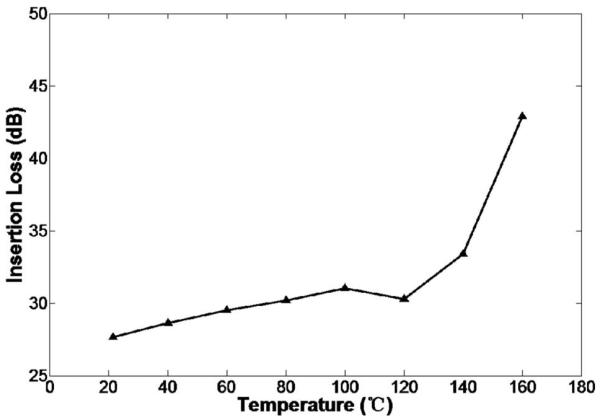
Temperature dependence of the insertion loss of the Pb(Mg1/3Nb2/3)–PbTiO3 (PMN-PT) linear-array ultrasonic transducer.
Fig. 4.
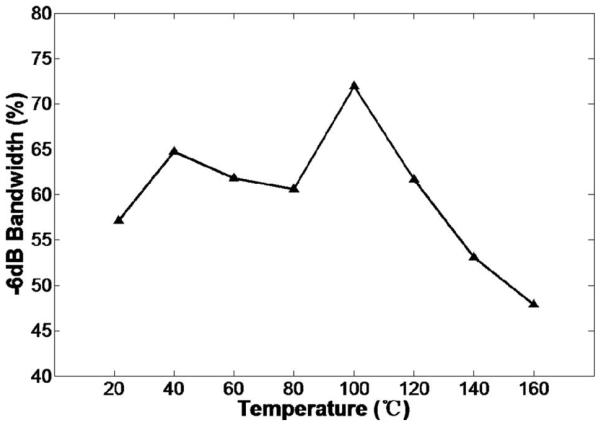
Temperature dependence of the −6-dB bandwidth of the Pb(Mg1/3Nb2/3)–PbTiO3 (PMN-PT) linear-array ultrasonic transducer.
To compare the temperature dependence of the array transducer performance, a 4-MHz linear array transducer fabricated using PIN-PMN-PT single crystal was measured under the same conditions as the PMN-PT array transducer. Fig. 5 shows the waveforms and frequency spectra of the PIN-PMN-PT single-crystal linear-array ultrasonic transducer measured at different elevated temperatures. The center frequency of the PIM-PMN-PT linear array transducer is about 4 MHz. It can be seen that the waveforms and spectra remain unchanged at higher temperatures. The center frequency, bandwidth, and insertion loss of the PIN-PMN-PT array transducer are calculated and summarized in Table IV. It can be seen that the transducer performance varies only slightly with temperature. The transducer performance is stable even when temperature increases from room temperature to 160°C. At 160°C, the PIN-PMN-PT transducer array still works normally with 66.7% bandwidth and 37.6 dB insertion loss.
Fig. 5.
Pulse-echo waveforms and frequency spectra of the Pb(In1/2Nb1/2)–Pb(Mg1/3Nb2/3)–PbTiO3 (PIN-PMN-PT) linear-array ultrasonic transducer measured after several temperature treatments: (a) 21.5°C, (b) 40°C, (c) 60°C, (d) 80°C, (e) 100°C, (f) 120°C, (g) 140°C, and (h) 160°C.
TABLE IV.
Temperature Dependence of the Performance of the Pb(In1/2Nb1/2)–Pb(Mg1/3Nb2/3)–PbTiO3 (PIN-PMN-PT) Linear-Array Ultrasonic Transducer.
| Temperature (°C) | Receive Vpp (mV) | fc (MHz) | −6-dB BW (%) | f1 (MHz) | f2 (MHz) | IL (dB) |
|---|---|---|---|---|---|---|
| 21.5 | 35.11 | 4.10 | 72.53 | 2.61 | 5.58 | 36.31 |
| 40 | 34.91 | 4.12 | 72.66 | 2.62 | 5.61 | 36.44 |
| 60 | 34.17 | 3.89 | 65.64 | 2.61 | 5.16 | 35.97 |
| 80 | 32.59 | 4.04 | 78.56 | 2.45 | 5.62 | 36.94 |
| 100 | 36.77 | 3.91 | 66.33 | 2.61 | 5.20 | 34.83 |
| 120 | 32.13 | 4.07 | 73.22 | 2.58 | 5.56 | 36.38 |
| 140 | 31.56 | 4.11 | 72.51 | 2.62 | 5.60 | 37.24 |
| 160 | 28.02 | 3.96 | 66.67 | 2.64 | 5.28 | 37.58 |
BW = bandwidth; IL = insertion loss.
Figs. 6 and 7 show the calculated insertion loss and −6-dB bandwidth of the PIN-PMN-PT single crystal array transducer as a function of temperature, respectively. The bandwidth and the insertion loss of the array transducer are shown to be almost independent of the temperature. These results indicate that the PIN-PMN-PT single crystal has better thermal stability than PMN-PT single crystal and is a promising candidate for high-temperature ultrasonic transducer applications.
Fig. 6.

Temperature dependence of the insertion loss of the Pb(In1/2Nb1/2)–Pb(Mg1/3Nb2/3)–PbTiO3 (PIN-PMN-PT) linear-array ultrasonic transducer.
Fig. 7.
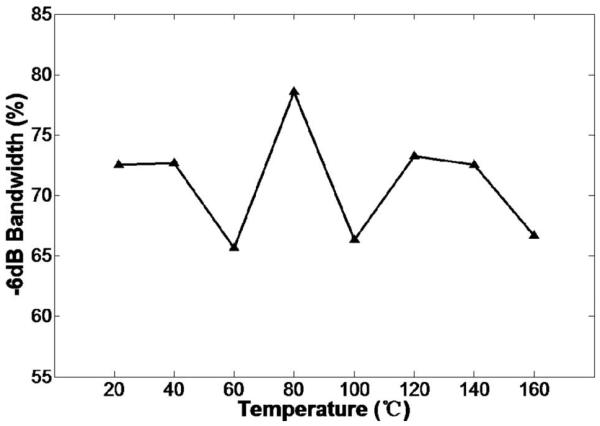
Temperature dependence of the bandwidth of the Pb(In1/2nb1/2)–Pb(mg1/3nb2/3)-PbTio3 (PIn-Pmn-PT) linear-array ultrasonic transducer.
IV. Conclusions
The PIN-PMN-PT and PMN-PT single-crystal linear-array ultrasonic transducers were fabricated and the pulse–echo performances of the array transducers as a function of temperature were investigated. Although the PMN-PT array transducer exhibits a better insertion loss parameter up to 140°C, compared with the PIN-PMN-PT array transducer, the insertion loss was found to increase at high temperature because of the low phase transition temperature of the PMN-PT single crystal. However, the properties of the PIN-PMN-PT array transducers were found to remain almost unchanged from room temperature to 160°C. These results clearly suggest that the PIN-PMN-PT single-crystal array transducers have superior thermal stability and hold great promise for high-temperature ultrasonic transducer applications.
Acknowledgments
This work was sponsored in part by the U.S. National Institutes of Health (NIH) grants SBIR phase I and P41 EB2182.
Biographies
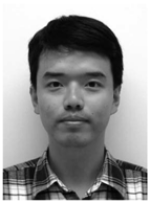
Ruimin Chen (S'07) received his B.S. degree from the University of Electronics Science and Technology of China, Chengdu, China, and his M.S. degree from the University of Southern California (USC), Los Angeles, CA, in 2006 and 2008, respectively, both in biomedical engineering. He is currently a Ph.D. student at the NIH Resource Center for Medical Ultrasonic Transducer Technology, Department of Biomedical Engineering, USC.
His research interests include the design, modeling, and fabrication of high-frequency ultrasonic transducers and arrays for medical imaging applications, piezoelectric material characterization, and photoacoustic imaging.
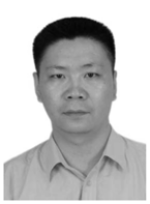
Jinchuan Wu was born in Shantou, China, on December 10, 1972. He received the bachelor's degree in chemistry from the Physics II Department of Fudan University, Shanghai, China, in 1996, and the master's degree from Fudan University in 1999.
Since 1999, he has been an engineer in the Transducer Department, Shantou Institute of Ultrasonic Instruments Co. Ltd. (SIUI), Shantou, China, responsible for ultrasonic transducer research and design. His current research interests are ultrasonic transducer materials and high-frequency ultrasonic transducers.

Kwok-Ho Lam received the M.Phil. and Ph.D. degrees in applied physics from the Hong Kong Polytechnic University in 2002 and 2006, respectively. During his graduate studies, he worked on the processing and characterization of piezoelectric ceramics, polymers, and composites and their applications in sensors and actuators. From 2007 to 2009, he worked as a Postdoctoral Fellow on the applications of smart materials in civil engineering structures at the Hong Kong Polytechnic University. Dr. Lam currently works as a Research Associate for the NIH Resource Center on Medical Ultrasonic Transducer Technology at the University of Southern California. His research interests include multifunctional smart materials, smart sensor and actuator technology, condition and health monitoring, and biomedical applications of ultrasonic transducers.
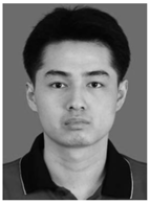
Liheng Yao was born in Shantou, China, on July 8, 1982. He received the bachelor's degree in physics from Sun Yat-Sen University, Guangzhou, China, in 2005, and the master of engineering degree in electronics and communication from Shantou University, Shantou, China, in 2010.
Since 2006, he has been an engineer in the transducer department of Shantou Institute of Ultrasonic Instruments Co. Ltd. (SIUI), Shantou, China, responsible for ultrasonic transducer research and design, including some electronic design work. His current research interests are piezoelectric single crystals, piezoelectric composites, ultrasonic transducers, and the computer modeling of transducers.
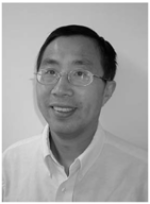
Qifa Zhou received his Ph.D. degree from the Department of Electronic Materials and Engineering of Xi'an Jiaotong University, China, in 1993. He is currently a Research Professor at the NIH Resource on Medical Ultrasonic Transducer Technology and the Department of Biomedical Engineering and Industry & System Engineering at University of Southern California (USC), Los Angeles, CA. Before joining USC in 2002, he worked in the Department of Physics, Zhongshan University of China, the Department of Applied Physics, Hong Kong Polytechnic University, and the Materials Research Laboratory, The Pennsylvania State University.
Dr. Zhou is a senior member of the IEEE Ultrasonics, Ferroelectrics, and Frequency Control (UFFC) Society and a member of the UFFC Society's Ferroelectric Committee. He is also a member of The Technical Program Committee of the IEEE International Ultrasonics Symposium. He is an Associate Editor of the IEEE Transactions on Ultrasonics, Ferroelectrics, and Frequency Control. His current research interests include the development of piezoelectric thin films, MEMS technology, nano-composites, and the fabrication of high-frequency ultrasound transducers and arrays for medical imaging applications, such as photoacoustic imaging and intravascular imaging. He has published more than 130 journal papers in this area.

Jian Tian (M'06-SM'11) received a B.Sc. (Hons) degree in geology, and an M.S. degree in geochemistry from Peking University, Beijing, China. He received a Ph.D. degree in geology and an M.S. degree in materials science and engineering from the University of Illinois at Urbana-champaign, Urbana, IL.
He is the Application and R&D Manager at H.C. Materials Corporation, Bolingbrook IL. His research interests include crystal growth of PMN-PT-based piezoelectric single crystals, new composition development, crystal physics, high-frequency crystal composites, and applications of piezoelectric crystals and crystal composite materials.
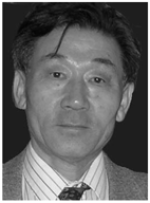
Pengdi Han (M'90) is one of the pioneers of large-scale multi-crucible Bridgman method crystal growth, and is the founder of H. C. Materials Corporation in Bolingbrook, IL. After being awarded his B.Sc. degree in electrical engineering from Wuhan University of Technology in 1964, he joined the crystal growth group of synthetic fluorine mica in the Shanghai Ceramic Institute, China. He became a Research Associate in the Research Institute of Synthetic Crystals in Beijing, China, after completing his graduate studies in the theory of crystal growth in the Chemistry Department of Shandong University, China, in 1978. He was awarded three Outstanding Research Prizes from the State Science Committee of China. He served as the Director of the Department of Functional Crystals and a Member of the Scientific Committee in the Research Institute of Synthetic Crystals from 1979 to 1986. He joined Professor David Payne's group as a Senior Research Scientist at the University of Illinois at Urbana-Champaign, from 1987 to 2000. His research interests include crystal growth and crystal physics. He has authored more than 120 papers, one book, and three patents.
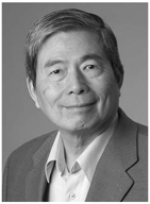
K. Kirk Shung obtained a B.S. degree in electrical engineering from Cheng-Kung University in Taiwan in 1968; an M.S. degree in electrical engineering from the University of Missouri, Columbia, MO, in 1970; and a Ph.D. degree in electrical engineering from the University of Washington, Seattle, WA, in 1975. He taught at The Pennsylvania State University, University Park, PA, for 23 years before moving to the Department of Biomedical Engineering, University of Southern California, Los Angeles, CA, as a professor in 2002. He has been the director of the NIH Resource on Medical Ultrasonic Transducer Technology since 1997.
Dr. Shung is a life fellow of IEEE and a fellow of the Acoustical Society of America and the American Institute of Ultrasound in Medicine. He is a founding fellow of American Institute of Medical and Biological Engineering. He received the IEEE Engineering in Medicine and Biology Society Early Career Award in 1985 and was the coauthor of a paper that received the best paper award for the IEEE Transactions on Ultrasonics, Ferroelectrics, and Frequency Control (UFFC) in 2000. He was elected an outstanding alumnus of Cheng-Kung University in Taiwan in 2001. He was selected as the distinguished lecturer for the IEEE UFFC society for 2002–2003. He received the Holmes Pioneer Award in Basic Science from American Institute of Ultrasound in Medicine in 2010. He was selected to receive the academic career achievement award from the IEEE Engineering in Medicine and Biology Society in 2011.
Dr. Shung has published more than 400 papers and book chapters. He is the author of the textbook Principles of Medical Imaging, published by Academic Press in 1992 and the textbook Diagnostic Ultrasound: Imaging and Blood Flow Measurements, published by CRC Press in 2005. He co-edited the book Ultrasonic Scattering by Biological Tissues, published by CRC Press in 1993. He is an associate editor of the IEEE IEEE Transactions on Ultrasonics, Ferroelectrics, and Frequency Control and a member of the editorial board of Ultrasound in Medicine and Biology. Dr. Shung's research interests are in ultrasonic transducers, high-frequency ultrasonic imaging, ultrasound microbeams, and ultrasonic scattering in tissues.
References
- [1].Service RF. Materials science—Shape-changing crystals get shiftier. Science. 1997 Mar;275:1878. [Google Scholar]
- [2].Damjanovic D, Budimir M, Davis M, Setter N. Piezoelectric anisotropy: Enhanced piezoelectric response along nonpolar directions in perovskite crystals. J. Mater. Sci. 2006 Jan;41:65–76. [Google Scholar]
- [3].Lam KH, Lo CY, Dai JY, Chan HLW, Luo HS. Enhanced magnetoelectric effect in a stress-biased lead magnesium niobate-lead titanate single crystal/Terfenol-D alloy magnetoelectric sensor. J. Appl. Phys. 2011 Jan;109 art. no. 024505. [Google Scholar]
- [4].Kim KB, Hsu DK, Ahn B, Kim YG, Barnard DJ. Fabrication and comparison of PMN-PT single crystal, PZT and PZT-based 1–3 composite ultrasonic transducers for NDE applications. Ultrasonics. 2010 Aug;50:790–797. doi: 10.1016/j.ultras.2010.04.001. [DOI] [PubMed] [Google Scholar]
- [5].Zhou QF, Xu XC, Gottlieb EJ, Sun L, Cannata JM, Ameri H, Humayun MS, Han PD, Shung KK. PMN-PT single crystal, high-frequency ultrasonic needle transducers for pulsedwave Doppler application. IEEE Trans. Ultrason. Ferroelectr. Freq. Control. 2007 Mar;54:668–675. doi: 10.1109/tuffc.2007.290. [DOI] [PubMed] [Google Scholar]
- [6].Lam KH, Chan HLW, Luo HS, Yin QR, Yin ZW. Piezoelectrically actuated ejector using PMN-PT single crystal. Sens. Actuators A. 2005 May;121:197–202. [Google Scholar]
- [7].Park SE, Shrout TR. Characteristics of relaxor-based piezoelectric single crystals for ultrasonic transducers. IEEE Trans. Ultrason. Ferroelectr. Freq. Control. 1997 Sep;44:1140–1147. [Google Scholar]
- [8].Ye ZG, Dong M. Morphotropic domain structures and phase transitions in relaxor-based piezo/ferroelectric (1−x)Pb(Mg1/3Nb2/3) O3−xPbTiO3 single crystals. J. Appl. Phys. 2011 Jan;87:2312–2319. [Google Scholar]
- [9].Harada K, Hosono Y, Saitoh S, Yamashita Y. Crystal growth of Pb (Zn1/3Nb2/3)0.91Ti0.09O3 using a crucible by the supported Bridgman method. Jpn. J. Appl. Phys. 2000 May;39(pt. 1):3117–3120. [Google Scholar]
- [10].Luo J, Hackenberger W, Zhang SJ, Shrout TR. Elastic, piezoelectric and dielectric properties of PIN-PMN-PT crystals grown by Bridgman method. IEEE Ultrasonics Symp. 2008:261–264. [Google Scholar]
- [11].Xu GS, Chen K, Yang DF, Li JB. Growth and electrical properties of large size Pb(In1/2Nb1/2)O3–Pb(Mg1/3Nb2/3)O3–Pb-TiO3 crystals prepared by the vertical Bridgman technique. Appl. Phys. Lett. 2007 Jan;90 art. no. 032901. [Google Scholar]
- [12].Zhang SJ, Luo J, Hackenberger W, Shrout TR. Characterization of Pb(In1/2Nb1/2)O3-Pb(Mg1/3Nb2/3)O3–PbTiO3 ferroelectric crystal with enhanced phase transition temperatures. J. Appl. Phys. 2008 Sep;104 doi: 10.1063/1.2978333. art. no. 064106. [DOI] [PMC free article] [PubMed] [Google Scholar]
- [13].Tian J, Han PD, Huang XL, Pan HX, Carroll JF, Payne DA. Improved stability for piezoelectric crystals grown in the lead indium niobate-lead magnesium niobate-lead titanate system. Appl. Phys. Lett. 2007 Nov;91 art. no. 222903. [Google Scholar]
- [14].Zhang SJ, Luo J, Hackenberger W, Sherlock NP, Meyer RJ, Shrout TR. Electromechanical characterization of Pb(In0.5Nb0.5)O3–Pb(Mg1/3Nb2/3)O3–PbTiO3 crystals as a function of crystallographic orientation and temperature. J. Appl. Phys. 2009 May;105 doi: 10.1063/1.3131622. art. no. 104506. [DOI] [PMC free article] [PubMed] [Google Scholar]
- [15].Zhou D, Cheung KF, Lam KH, Chen Y, Chiu YC, Dai JY, Chan HLW, Luo HS. Broad-band and high-temperature ultrasonic transducer fabricated using a Pb(In1/2Nb1/2)–Pb(Mg1/3Nb2/3)–PbTiO3 single crystal/epoxy 1–3 composite. Rev. Sci. Instrum. 2011 May;82 art. no. 055110. [Google Scholar]
- [16].Lee H, Zhang SJ, Luo J, Li F, Shrout TR. Thickness-dependent properties of relaxor-PbTiO3 ferroelectrics for ultrasonic transducers. Adv. Funct. Mater. 2010 Sep;20:3154–3162. doi: 10.1002/adfm.201000390. [DOI] [PMC free article] [PubMed] [Google Scholar]
- [17].Sun P, Zhou QF, Zhu BP, Wu DW, Hu CL, Cannata JM, Tian J, Han PD, Wang GF, Shung KK. Design and fabrication of PIN-PMN-PT single-crystal high-frequency ultrasound transducers. IEEE Trans. Ultrason. Ferroelectr. Freq. Control. 2009 Dec;56:2760–2763. doi: 10.1109/TUFFC.2009.1367. [DOI] [PMC free article] [PubMed] [Google Scholar]
- [18].Shung KK, Zipparo M. Ultrasonic transducers and arrays. IEEE Eng. Med. Biol. Mag. 1996 Nov-Dec;15:20–30. [Google Scholar]
- [19].Ritter T, Geng XC, Shung KK, Lopath PD, Park SE, Shrout TR. Single crystal PZN/PT-polymer composites for ultrasound transducer applications. IEEE Trans. Ultrason. Ferroelectr. Freq. Control. 2000 Jul;47:792–800. doi: 10.1109/58.852060. [DOI] [PubMed] [Google Scholar]



